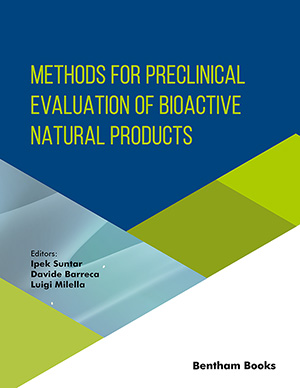Abstract
The interaction of some antitumoural drugs with double stranded DNA immobilised on screen-printed electrodes was studied as a screening tool for in vitro DNA-drug interaction. In this case DNA biosensors are used for qualitative analysis as a rapid indication of the behaviour of DNA with different metal complexes and are proposed as an alternative method of the most common techniques. In fact, DNA based electrochemical biosensors represent a new research field with interesting possibilities for practical application in various areas such as environmental and pharmaceutical screening. Interactions of DNA with chemicals can result in various types of DNA damage. Many small molecules show a high affinity for DNA and they can interact with the nucleic acids immobilised on the electrode surface. The interactions between DNA and drugs can cause chemical and conformational modifications of nucleic acids and thus variation of the electrochemical properties of DNA. The presence of compounds with affinity for DNA is measured by their effect on the guanine or adenine oxidation peak. A great advantage of this kind of biosensors is that they are cost effective and they can be used with a small portable potentiostat with disposable screen-printed electrodes (SPE). In this work, screening of some antitumoural drug is reported as example of in vitro interaction. Preliminary results have been obtained analysing different type of DNA-interacting agents as metal (Pt, Ru and Ti) complexes. The drugs analysed were cis-diaminedichloroplatinum(II) cis-[Pt(Cl)2(NH3)2] (cisplatin); diamine(1,1-cyclobutanedicarboxylate)platinum(II) [Pt(NH3)2C4H6C2O4] (carboplatinum); cis-diamineplatinum(II)malonate cis-[Pt(NH3)2 C3H2O4] (cis-malonate); platinum(bipyridile(pyridine)2)2+ [Pt(bpy)(py)2]2+; titanocene dichloride [(η5-C5H5)2TiCl2] (titanocene); titanocenebisglycine [(η5-C5H5)2Ti(gly)2] and imida z olium trans- imida zole dimethylsulfoxidetetr ac hloro-r uthena te [ Ru(I I I) Cl4( DMSO ) (I m) ][ I mH ] ( NA MI - A) . Groove binding, electrostatic interactions, hydrogen and/or van der Waals bonds and intercalation of planar condensed aromatic ring systems between adjacent base pairs are the interactions that the DNA electrochemical biosensor can detect. Different response behaviour has been observed with these drugs according to different interaction with DNA.
Keywords: dna biosensor, screen-printed electrodes, dna-drug interaction




























